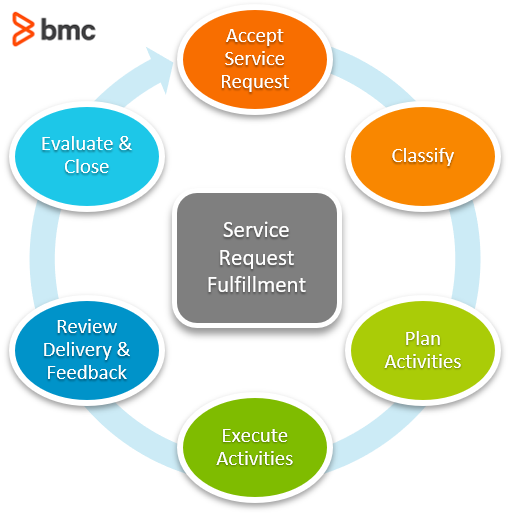The digital revolution has ushered in a new era of customer expectation, with customer centricity a make-or-break factor when it comes to digital success. Technology advances like the smartphone, AI, IoT, and social media have equipped customers with the capabilities to demand and receive services that exceed their expectations in terms of delivery and quality.
Today’s digital customer is one who has been accustomed to having:
- A variety of options
- Their needs met quickly and seamlessly
- Little or no interactions or handovers
As a result, many IT organizations struggle to adapt to this new thinking when it comes to serving users, as their traditional rigid approach is now being considered a hallmark of bad user experience. Once looked down upon as rebellious user behavior, shadow IT is now expected to be supported through a broker type approach, since the digital user is better equipped to research and experiment with solutions that work in their context.
So how can IT better fulfil requests from users in the digital age? We explore the practice of request management in this article.
Who is today’s digital user?
Today’s customers are different than in the past. The World Economic Forum reported that some essential attributes of customer expectations in today’s digital world include:
- Contextualized interactions. Avoiding a one-size-fits-all approach and instead looking to address the customer’s needs based on their situation.
- Seamless experience across channels. The customer does not start from scratch when interacting across multiple channels e.g., phone, email, website, mobile app, or service center.
- Anytime, anywhere access to content and services. The customer wants unrestricted service access, on the device of their choice, and at their convenience.
- Transparency. The customer wants open, clear, and simplified information on service options including pricing.
- Access to peer review and advocacy. The customer wants objective information on previous customer reviews and experiences before making their decision.
Understanding the customer has become a key ingredient in successful request management. Customer experience (CX) is no longer down to a rational experience (e.g., speed of fulfilment or product specifications). Today, CX also includes a subconscious element—how they felt when interacting with the service as well as the service provider.
According to VeriSM, a service provider cannot truly understand whether they are meeting a consumer’s desired outcomes without measuring their experience of a product or service. So, your organization must continually look for ‘moments of truth’ that can help to improve the CX. Detrimental moments of truth could be as simple as:
- Broken links that lead to dead ends
- Incorrect information
- Lack of empathy
Correcting any of these as a matter of routine will vastly improve the customer experience.
Request management activities
We can group the types of requests that uses make into a few buckets, per the ITIL® 4 Foundation publication:
- Service delivery actions, for example registering for an online entertainment service
- Information, like learning how to upgrade a subscription
- Provision of a resource or service, such as ordering some fast food via an app
- Access to a resource or service, for example subscribing to an online music library
- Feedback, compliments, and complaints, such as providing a rating after a delivery
These requests can be handles in two ways: by the staff at the service provider or through automated means.
The USM method defines six steps involved in fulfilment of service requests:

- Accept service request. This is triggered by receiving the service request from the defined service provider channel e.g., phone, email, or service portal. The service provider’s agent or system records the request and acknowledges receipt to the requester.
- Classify. The request is classified according to type, impact, urgency, priority, and any other criteria that the service provider sees fit. Classification is crucial in efficient determination of how the request will be handled.
- Plan activities. The service provider will organize the resources required to fulfil the request. Where approvals are required, these will be sought. Where the service provider is unable to fulfil the request, appropriate responses to the requester will be required.
- Execute activities. The request will be fulfilled by the service provider through their staff or third party. The requester might also fulfil the request themselves based on resources provided by the service provider. Where the request cannot be fulfilled, the service provider will respond to the requester and provide alternatives or refunds where possible.
- Review delivery and feedback. After fulfilment, the service provider will check with the requester to validate whether the actions meet their requirements. If the requester has issues with the fulfilment, immediate action will be taken to address them.
- Evaluate and close. Once feedback is received, the service provider will evaluate how the request was handled based on internal metrics including customer experience ratings. The record of the request will then be closed.
Good practices in request management
It is important to distinguish requests from other interactions—especially from incidents. A one-size-fits-all approach might impact customer experience negatively, particularly where classification is not well understood resulting in dissatisfaction.
VeriSM informs service providers to keep CX/UX in mind when managing requests, and consider these aspects:
- Is the system that captures these requests easy to use?
- Once captured, are all requests reviewed for entitlement?
- Are requests fulfilled within agreed timeframes with status updates communicated?
- Are there defined workflows and authorization points where required?
- Is requester consent required to close or escalate the request?
Service providers should equip staff with requisite knowledge on fulfilling requests in a way that meets customers’ and users’ expectations. The ISO/IEC 20000:2018 service management standard requires that instructions for fulfilment of requests should be made available for persons involved.
CX/UX can be negatively impacted where agents demonstrate lack of knowledge or expertise in fulfilling requests, especially if the user is more informed. One bad example I have seen is a call center flooded with calls about a new service that has been advertised on media that morning—but the agents hadn’t yet been informed or trained.
Other guidelines on service request management from ITIL 4 include:
- Standardizing and automating request fulfilment to the highest degree possible
- Approving and communicating policies on handling requests including where approvals are required, and redirecting workflows depending on type
- Clearly setting user expectations on fulfilment timelines based on the service provider’s capacity
(Explore the ITIL 4 service request management practice.)
Great request management is great customer service
At the end of the day, you want to provide your customers a good, valuable service. By ensuring smooth request management activities, that properly set expectation, customers will be satisfied with your service, your staff, and your organization.







